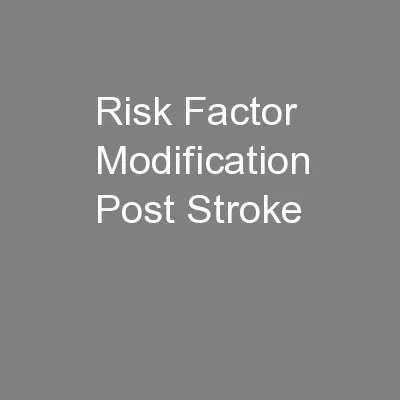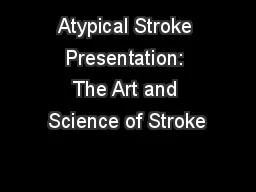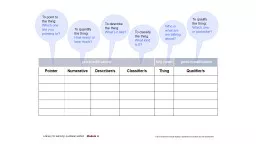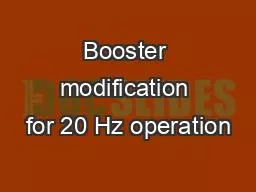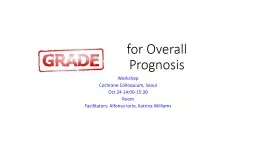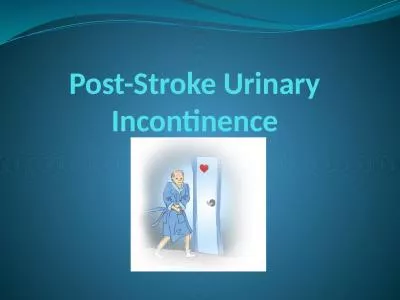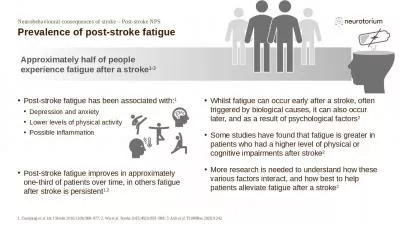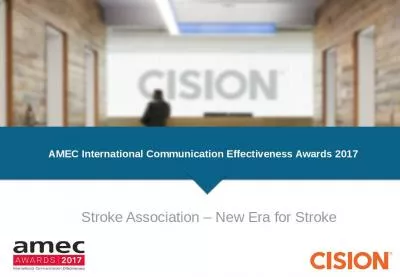PPT-Risk Factor Modification Post Stroke
Author : olivia-moreira | Published Date : 2016-08-04
Ron Pellegrino MD November 20 2015 Objectives Become comfortable with risk factor modification and chronic management of the post stroke patient Review the major
Presentation Embed Code
Download Presentation
Download Presentation The PPT/PDF document "Risk Factor Modification Post Stroke" is the property of its rightful owner. Permission is granted to download and print the materials on this website for personal, non-commercial use only, and to display it on your personal computer provided you do not modify the materials and that you retain all copyright notices contained in the materials. By downloading content from our website, you accept the terms of this agreement.
Risk Factor Modification Post Stroke: Transcript
Download Rules Of Document
"Risk Factor Modification Post Stroke"The content belongs to its owner. You may download and print it for personal use, without modification, and keep all copyright notices. By downloading, you agree to these terms.
Related Documents

